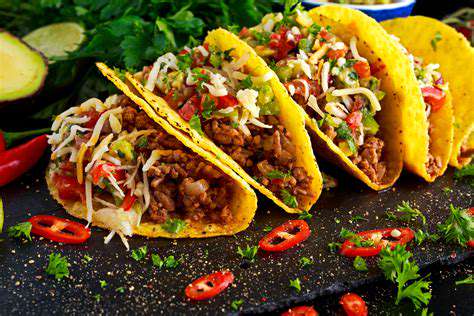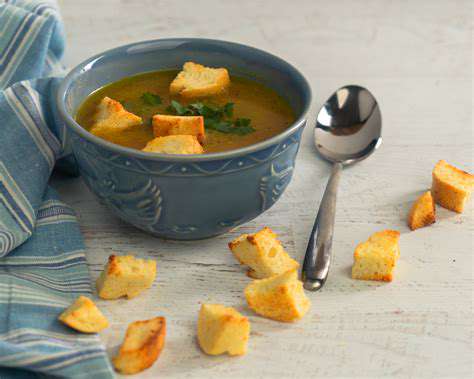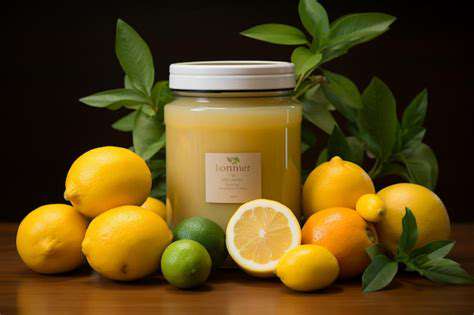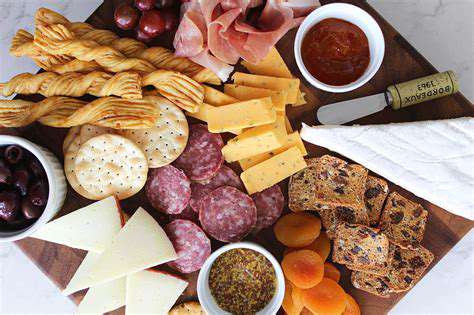Best Spots for Tacos in Mexico City

A Deliciously Aromatic Experience
Few street foods captivate the senses like tacos al pastor. The moment you catch that first whiff of caramelizing pineapple and spiced pork, you know you're in for something special. This isn't just food - it's edible history, a perfect example of how Mexican cuisine blends tradition with innovation.
What makes these tacos stand out is the cooking method. The vertical spit, known locally as a trompo, isn't just for show. It creates layers of flavor you simply can't replicate on a flat grill. As the pork slowly rotates, the outer edges crisp up while the inner layers stay juicy. This contrast in textures is what separates good tacos from unforgettable ones.
The Marination Magic
Any taco vendor will tell you - the marinade makes or breaks al pastor. While recipes vary, the best versions balance three key elements: acidity (usually from citrus), heat (from chilies), and earthiness (from spices like achiote). The magic happens when these flavors have time to work their way deep into the meat fibers, transforming tough cuts into tender, flavor-packed morsels.
What many don't realize is how regional differences affect the marinade. Coastal versions might use more lime, while inland recipes could favor orange juice. Some family recipes include unexpected ingredients like cola or beer, proving there's always room for creativity within tradition.
The Crucial Role of the Trompo
That spinning tower of meat isn't just for show - it's a precision cooking instrument. The constant rotation ensures every slice gets equal exposure to the heat source. This creates those perfect charred edges while keeping the interior moist. Skilled taqueros know exactly when to carve off slices - too soon and the meat's underdone, too late and it dries out.
Interestingly, this cooking method has roots in Middle Eastern shawarma, brought to Mexico by Lebanese immigrants. The Mexican twist? Adding local spices and that signature pineapple on top. It's a beautiful example of how cuisines evolve through cultural exchange.
A Fusion of Flavors
The pineapple isn't just garnish - it serves multiple purposes. As the juices drip down, they caramelize on the meat below, adding subtle sweetness to counterbalance the spice. When served fresh on the taco, it provides a bright, acidic contrast. Some vendors even use pineapple in their marinade, creating a more complex flavor profile.
A Perfect Pairing
Toppings matter more than you might think. The classic trio - diced onion, cilantro, and salsa - each serves a purpose. Onion adds crunch, cilantro freshness, and salsa heat. But don't overlook the importance of texture - the contrast between crispy meat edges and soft tortilla is part of what makes these tacos so satisfying.
Preparation and Presentation
There's an art to assembling these tacos. The best taqueros layer ingredients strategically - a base of meat, then pineapple, then toppings, ensuring every bite has balanced flavors. Watch how they fold the tortilla - too loose and fillings fall out, too tight and you lose the textural contrast. It's these small details that elevate street food to an art form.
A Global Phenomenon
From food trucks in Tokyo to trendy restaurants in London, tacos al pastor have gone global. But the best versions still come from street stalls where the trompo has been spinning for decades. What started as a local specialty now represents Mexican culinary innovation worldwide, proving great food needs no translation.
Tacos de Barbacoa: A Rich and Flavorful Experience
Origins and Evolution of Barbacoa Tacos
Barbacoa traces its roots to pre-Hispanic cooking techniques, where meat was slow-cooked in underground pits. This ancient method survives today, though modern adaptations use above-ground ovens. The key remains patience - proper barbacoa can't be rushed. As the collagen breaks down over 8-12 hours, tough cuts transform into succulent, pull-apart tender meat.
Regional variations tell fascinating stories. In Hidalgo, they use maguey leaves to wrap the meat, imparting a distinct herbal note. Northern versions might feature beef instead of the traditional lamb or goat. Each variation reflects local resources and tastes, creating a rich tapestry of flavors across Mexico.
The Perfect Barbacoa Taco: Key Ingredients and Preparation
Three elements define exceptional barbacoa tacos: the meat's tenderness, the tortilla's freshness, and the salsa's balance. The meat should shred easily with just a fork, its richness cut by acidic salsas. Corn tortillas are non-negotiable - their earthy flavor complements the meat perfectly. As for salsa, a smoky chipotle or bright tomatillo version both work beautifully.
Don't overlook the consomé - that rich, gelatinous broth served on the side. It's not just soup - dipping your taco into it adds another layer of flavor and moisture. Some aficionados swear the consomé is the real star of the show.
Regional Variations in Barbacoa Tacos
Travel across Mexico and you'll encounter surprising differences. Coastal regions might incorporate seafood into their barbacoa, while mountainous areas stick to traditional meats. Some versions use banana leaves instead of maguey, creating a subtly sweeter profile. These variations aren't just about taste - they represent centuries of culinary adaptation to local environments.
Beyond the Meat: Accompaniments and Sides
The supporting cast matters. Pickled onions provide acidity to cut through the richness. Radishes add crunch. Even the humble lime wedge serves a purpose - its juice brightens all the flavors. These aren't just garnishes - they're essential balancing elements that complete the dish.
Finding the Best Barbacoa Tacos in Mexico
For the authentic experience, follow these tips: Look for places that make their own tortillas - it shows commitment to quality. Arrive early - the best barbacoa often sells out by midday. Watch how they handle the meat - it should be tender but not mushy. Most importantly, trust your nose - that deep, meaty aroma never lies.
Creating memorable food experiences shares surprising similarities with good UX design. Both require understanding what people truly want, often before they know it themselves. The best taco stands, like the best digital products, solve problems you didn't know you had. They anticipate needs - whether it's the perfect salsa heat level or exactly where to place the lime wedge for maximum convenience.
Top Tips for Finding the Best Tacos:

Ingredient Selection:
Quality ingredients separate good tacos from great ones. Seek out places that source locally - you'll taste the difference. The corn for tortillas should be nixtamalized (treated with limewater) for authentic flavor and texture. Meat should be freshly prepared, not sitting in steam trays. Even the salsa ingredients matter - look for places that roast their chilies and tomatoes rather than using raw versions.
Don't underestimate the importance of fat content in meats. While lean cuts seem healthier, a bit of fat carries flavor and creates that perfect mouthfeel. This is why traditional carnitas use well-marbled pork shoulder rather than lean loin.
Preparation and Presentation:
Watch how tacos are assembled. The best taqueros build tacos with intention - meat goes on first to warm the tortilla, then toppings are added with precision. Notice how they handle tortillas - they should be warmed properly but not dried out. A good test? The tortilla should be pliable enough to fold without cracking but sturdy enough to hold fillings without falling apart.
Temperature matters more than most realize. Ingredients should be hot where they need to be (meat), cool where they should be (crema), and room temperature where it makes sense (avocado). This contrast keeps flavors distinct while creating a harmonious whole.
Read more about Best Spots for Tacos in Mexico City
Hot Recommendations
- Traditional Foods for Day of the Dead
- Food Etiquette in Italy: Pasta Rules!
- Best Family Friendly Restaurants with Play Areas in [City]
- Review: The Best [Specific Dessert] Place in [City]
- Top Ice Cream Parlors in [City]
- Traditional Foods for Halloween
- The History of the Potato in Ireland
- Best Vegan Pizza Joints in [City] [2025]
- Best Bakeries for Sourdough Bread in [City]
- Food Culture in Argentina: Asado and Wine



![Best Mexican Restaurants in [City]](/static/images/28/2025-05/FineDiningMeetsMexicanFlair3AAnElevatedCulinaryExperience.jpg)
![Best Vegetarian Restaurants in [City]](/static/images/28/2025-05/LocalFavoritesandHiddenGems.jpg)




![Healthy Eating for Athletes [Fueling Your Body]](/static/images/28/2025-05/BeyondtheDiet3ALifestyleFactorsforAthleticSuccess.jpg)

